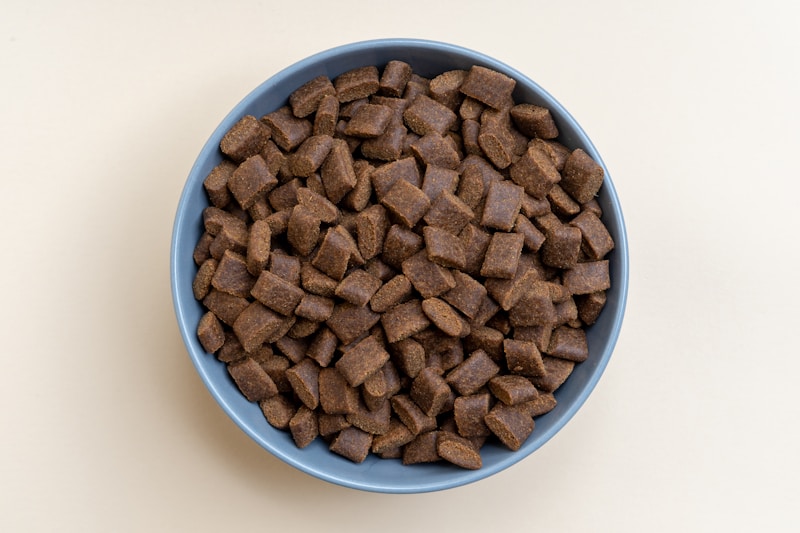As pets age, their dietary needs change significantly. Just like humans, senior animals may face a variety of health challenges that can be managed or even improved with the right nutrition. Choosing the best diet for a senior pet is crucial to maintaining their quality of life, managing chronic conditions, and supporting their physical and mental well-being. In this article, we’ll explore what makes a good senior pet diet and break down specific considerations to help guide you in making the best choices for your aging companion.
Understanding the Nutritional Needs of Senior Pets
Senior pets generally need fewer calories than their younger counterparts due to decreased activity levels and slower metabolism. However, this doesn’t mean they need less nutrition—in fact, their diet should be more nutrient-dense to support aging bodies.
Protein is especially important for older pets. While it was once thought that high protein could damage aging kidneys, modern research shows that high-quality protein actually helps preserve muscle mass and supports organ function. Additionally, senior pets often benefit from increased levels of antioxidants, omega-3 fatty acids, and joint-supporting ingredients like glucosamine and chondroitin.
It’s also essential to consider any chronic conditions that may have developed over time. Conditions such as arthritis, kidney disease, diabetes, and dental issues often require dietary adjustments. Consulting with a veterinarian for a personalized nutrition plan is always the best first step.
Top Ingredients to Look for in Senior Pet Diets
When choosing a diet for your senior pet, whether it’s commercial or homemade, you should look for ingredients that specifically support aging. Here are some key components to prioritize:
-
High-quality protein sources such as chicken, turkey, fish, or lamb to maintain muscle mass.
-
Omega-3 fatty acids (from fish oil or flaxseed) to support joint health, reduce inflammation, and promote cognitive function.
-
Fiber to aid digestion and prevent constipation, which can be common in older pets.
-
Antioxidants like vitamin E, vitamin C, and beta-carotene to help combat oxidative stress and support immune function.
-
Glucosamine and chondroitin for joint support, especially in pets with arthritis or mobility issues.
-
Controlled phosphorus and sodium levels, particularly in pets with kidney or heart disease.
It’s also important to ensure the food is palatable and easy to chew. Dental issues are common in aging pets, so softer textures or smaller kibble sizes may be beneficial.
Commercial Diets vs. Homemade Meals
Many pet owners face the choice between feeding commercial senior pet food and preparing homemade meals. Each approach has its advantages and challenges.
Commercial senior pet foods are typically formulated to meet the nutritional requirements of older pets. Look for products labeled by the Association of American Feed Control Officials (AAFCO) as appropriate for “maintenance” or “all life stages.” These diets offer convenience, nutritional balance, and consistency. Some even come in formulations tailored to specific health issues like kidney support or weight management.
Homemade diets, on the other hand, offer full control over ingredients and quality. They can be tailored to suit specific medical conditions, allergies, or preferences. However, homemade meals must be carefully balanced. It’s easy to unintentionally create nutrient deficiencies or excesses, which can be harmful over time. If you choose this route, work closely with a veterinary nutritionist to develop and monitor the diet.
Tips for Transitioning Your Pet to a Senior Diet
Switching your pet to a senior diet should be done gradually to avoid gastrointestinal upset. Here’s how to make the transition smooth and successful:
Go slow: Gradually mix the new food with your pet’s current food over 7–10 days, increasing the proportion of new food each day.
Monitor appetite and digestion: Watch for changes in appetite, stool consistency, and energy levels. If problems arise, consult your vet.
Make it appealing: Warming up the food or adding a small amount of low-sodium broth can increase palatability for picky eaters.
Stay consistent: Once the transition is complete, stick to the routine. Frequent changes can lead to digestive upset.
Regular vet check-ups: Routine veterinary visits are essential to monitor your pet’s health and adjust their diet as needed.
Feeding your senior pet a balanced, age-appropriate diet is one of the most important ways to support their health and happiness in their golden years. Whether you choose a high-quality commercial food or prepare meals at home, the goal is the same: to meet your pet’s evolving nutritional needs while maintaining their quality of life. Always consult your veterinarian before making major dietary changes—your pet’s long-term health depends on it.

